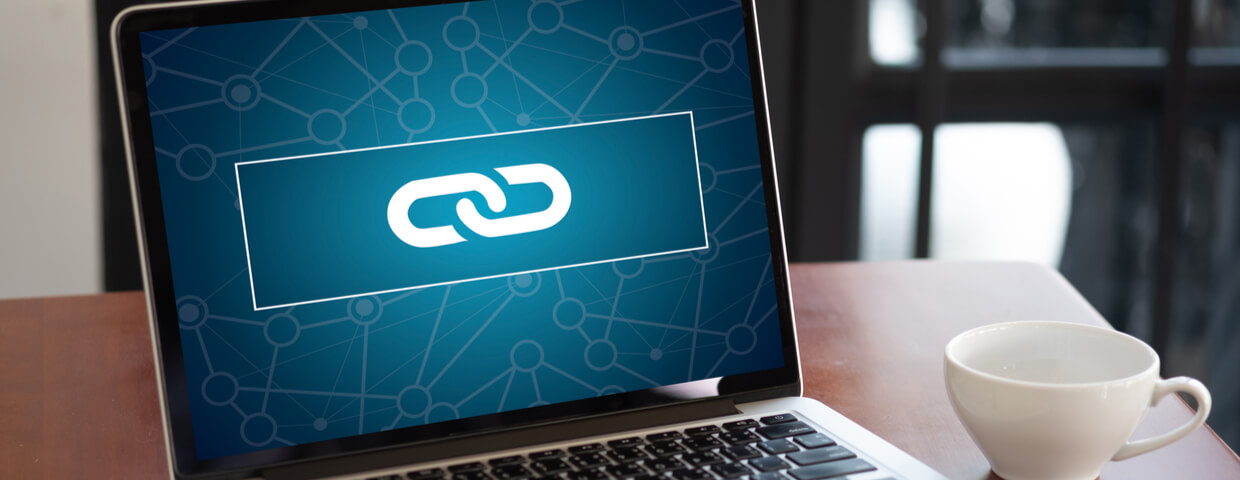The Real Cost of Bad Backlinks [& How to Avoid Them]
Posted by Emery Pearson on Feb 13, 2020 8:15:00 AM

In SEO forums, blog posts, and comment sections across the web, there are mixed opinions about bad backlinks. Many times, folks recommend not worrying about backlinks, and even Google has said that most sites do not even have toxic backlinks.
However, as someone who has dealt with manual penalties from Google and cleaned up toxic backlink profiles, I think it's crucial that you consider your backlink profile and have an understanding of what's considered right and wrong in the eyes of search engines.
Should You Worry About Your Backlinks?
It's worth your time to pay attention to your backlink profile, especially if:
- Someone else ran/performed SEO on your site before you
- The site has had a history of black hat SEO tactics
- Anyone from Fiverr ever "did SEO"
- You've ever done a link exchange, bought links, or did any other old practices of link building that are on Google's no-no list
- You're not certain there aren't toxic links pointing to your site
- You're trying to build links, but you're not familiar with Google's guidelines
Toxic Backlinks: Worst Case Scenario
Back in the day, what are now considered black hat SEO tactics were actually pretty common. People knew you needed backlinks, so they found ways to get them. Google put the kibosh on those practices and eventually began handing out penalties to the worst offenders. These days, SEOs are (mostly) warned against building spammy or unnatural backlink profiles (though, I suspect, many still do). Why? What's the worst that could happen? If you haven't heard about it, meet the manual action.
What is a Manual Action?
Manual actions happen when Google (via a human reviewer, not an algorithm) determines that your site is in violation of Google's quality guidelines. There are several types of manual actions -- from thin content, to issues with structured data, to spam on the site, or spammy backlinks -- but they all lead to a penalty being placed on your website. That penalty means you lose your rankings and Google does not send any traffic to your site. Organic traffic goes poof.
What Happens When You Get a Manual Penalty?
The first thing you'll likely see is a major drop in traffic. However, if you do receive a penalty from Google, you'll get a notification through Search Console, which should also go to any email addresses linked there. (Note: there are two types of penalties. One results in a partial removal from search and the other is a complete removal of a site from search and indexing. I personally have only dealt with the full penalty).
From there, you have to take specific steps as requested by Google to have the penalty lifted. In the case of the unnatural links penalty, Google asks that you remove all the bad links. They provide you with "examples," but in my experience, you have to get a full list of links from a variety of sources (I typically use a combo of Google Search Console, Ahrefs, SEMRush, and Moz).
Finally, you submit a reconsideration request and cross your fingers. More often than not, Google wants you to do more work, so you might end up submitting a few requests.
Removing a Manual Action for Unnatural Links
The first manual penalty for unnatural links that I dealt with took me over 6 months to get lifted.
Part of that is because the site owner wanted to be careful with removing links. He was operating under the impression that losing good links would be even more harmful.
He was correct, in a way, but in this particular instance, being aggressive in link removal may have helped us with the manual action sooner. This is, of course, going to be a tough call for anyone cleaning up a backlink profile. In the case I'm talking about, the owner had recently purchased the site, so he couldn't say with certainty if all the possibly spammy links were in fact placed "unnaturally." We could guess, but it's impossible to know how Google evaluates each link.
Here's an overview my current process for dealing with a link-based manual penalty:
- Do a full backlink audit
- Determine 'good,' 'bad,' and 'unknown' links by evaluating every single link
- Contact as many webmasters as possible for 'bad' links and ask for removal
- Find out more info on 'unknown' links and eventually make a call of bad/good
- Keep notes on EVERYTHING (dates, who I contacted, my notes on each link)
- Follow up with webmasters after a few weeks if I haven't heard back
- Disavow any links I cannot get removed
- Submit a reconsideration request with complete notes and a well-crafted explanation of why the links happened, what actions I took, what we'll be doing in the future
- Repeat process as needed
This process is time-consuming and pretty exhausting. And, once you do get the penalty removed (which, again, can take a few reconsideration requests), it takes time for your site to recover. In many cases, sites will never recover to their pre-penalty levels.
To get a penalty for links removed you must, and I cannot stress this enough, do the work -- and show Google you did the work -- to fix the problem. Disavowing links is not enough.
How to Not Get Hit with a Google Penalty
Hopefully by this point it's pretty obvious that getting a manual action is pretty much disastrous, and that it's a really darn good idea to avoid getting one in the first place. So how do you avoid an unnatural link manual action? Let's take a look at what to avoid when you're building links and what to do if you have a not-so-kosher backlink profile now.
Stay Away from These Strategies
Google only gives examples of link schemes that don't fly (like buying links, excessive link exchanges, and automated linking), but these aren't the only ones that they consider spammy, unnatural, or toxic. Here are some that I encourage sites to stay away from.
Directories. Yes, local businesses still want to get on relevant directories (ones that users actually visit), but in general, directories are old news -- and they can be bad for SEO. Rampant abuse has rendered these links unuseful, and in many cases, spammy.
Press Releases. This is another type of link that has little-to-no relevance any longer because it was over-used for link building. Do press releases strategically (and correctly) or avoid them all together.
Blog Networks. Every SEO knows (or should know) that Private Blog Networks (PBNs) are outdated, very bad methods of getting backlinks, and yet, they're still happening. Pro tip? Never, ever build a bunch of blogs, fill them with nonsense, and add keyword-rich, follow links to your site. And if you're paying someone for SEO and they are doing this? Fire them.
Social Bookmarking Sites. I'm adding this one to the list because every toxic profile I've seen has a bunch of these. Plus, most reputable social bookmarking sites (like Pinterest) have nofollow links out, so it might be useful for traffic, but less so for SEO.
Non-Niche Reciprocal Links. Pointing your audience to links is going to (and should) happen as a natural part of your site building. The key is to make sure those sites are your niche market. If they're not, and you have an exorbitant amount of them, you're going to get yourself into trouble.
Clean Up Your Backlinks
If you're uncertain about the state of your backlink profile and you A) have a bunch of toxic links that someone placed intentionally and/or B) suspect you might be at risk of a manual action, it's time to clean up your backlinks.
First, understand that this is a time-intensive process that should not be taken lightly. Having backlinks is a crucial part of SEO, and removing any can have an adverse effect on your site. However, I'm of the mindset that if you have a bad backlink profile and are even slightly at risk of getting a penalty, a slight drop in traffic or rankings from removal is worth it long-term. Penalties are much, much worse.
Second, do a full backlink audit, paying attention to follow links. Make judgement calls on every link based on whatever data you can gather: how the linking site looks, what their traffic is like, any information you have about backlink tactics in the past.
Then, do some outreach to sites that link to you. If you want the link gone, politely ask for its removal. Or, ask them to change it to a nofollow link. Very obviously toxic links (spammy redirects, porn sites, etc.) can just be disavowed.
Finally, do a disavow of any links that you can't get removed and are sure are toxic. REMEMBER: Disavowing links can affect your traffic! Don't disavow until you are totally sure.
Want some help with backlinks? We can help!

Written by Emery Pearson
Emery is the content strategist at Tribute Media. She has an MA in rhetoric and composition from Boise State University, and she is currently an MFA candidate in creative writing at Antioch University. She lives in southern California with a bunch of creatures and many plants.


